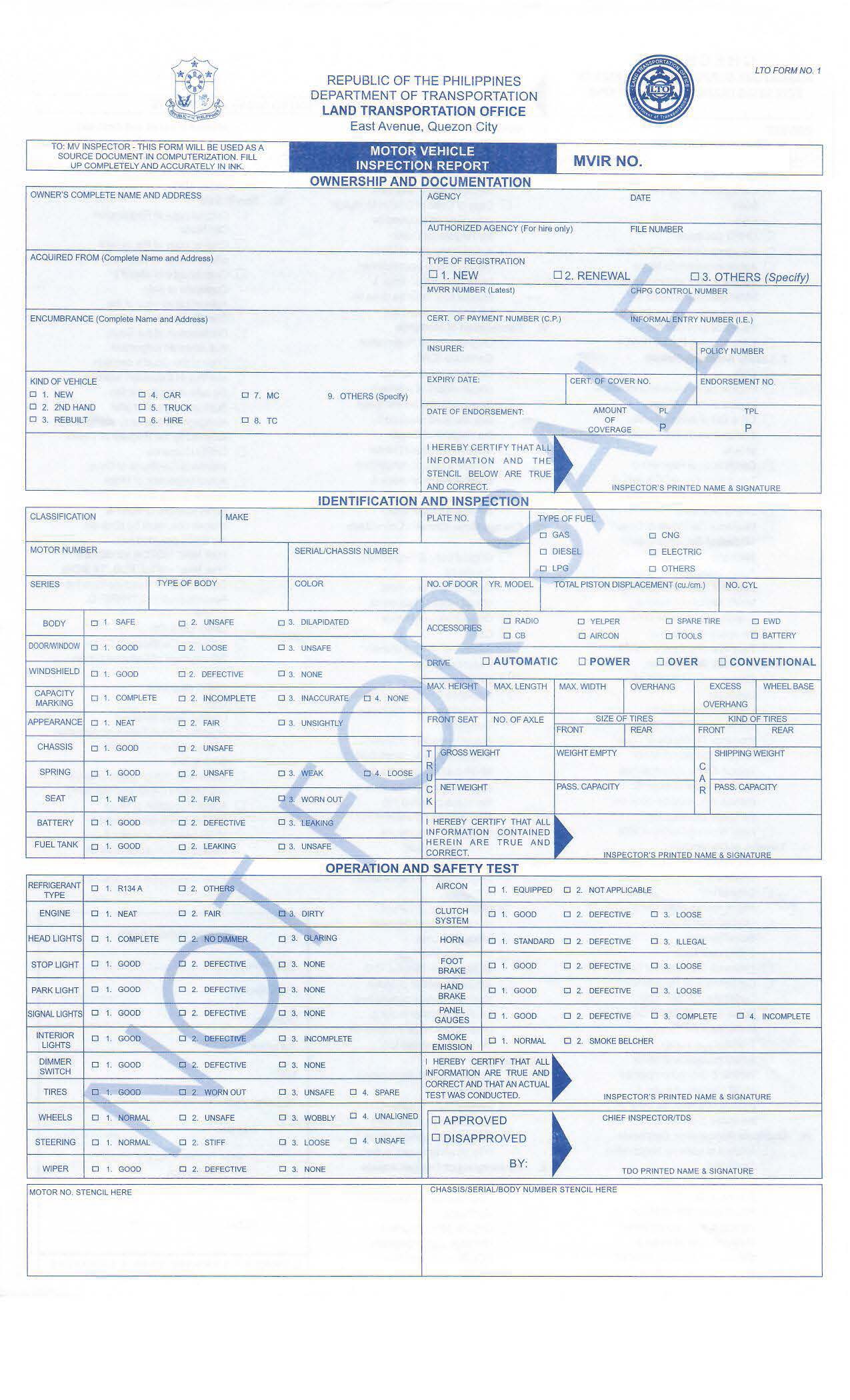Taking care of your motor vehicle’s legal requirements can sometimes feel overwhelming, especially when unexpected issues like defaced engine or chassis numbers arise.
Re-stamping is a process offered by the Land Transportation Office (LTO) to re-engrave numbers that have become hard to read.
This service is helpful for anyone dealing with rusted, damaged, or tampered chassis or engine numbers.
If you’re selling your vehicle, transferring ownership, or renewing registration, this process can save you from delays and complications.
The re-stamping fee starts at PHP 90, with some additional charges depending on the situation.

What Is Motor Vehicle Re-Stamping?
Re-stamping is the process of restoring legibility to your vehicle’s engine or chassis numbers by re-engraving them.
This is often required when the original markings have faded or become unclear over time.
By completing this process, your vehicle becomes easier to identify and legally compliant for inspections, registrations, and other transactions.
Who Needs This Service?
Re-stamping is for vehicle owners whose engine or chassis numbers are no longer readable due to corrosion, damage, or previous modifications.
If you own a secondhand vehicle, this process may also apply to you during ownership transfers.
Vehicles that underwent repairs or rebuilding may also need re-stamping to correct any changes or discrepancies.
This service helps protect your ownership rights and prevents issues during registration or legal checks.
What Do You Need to Get Started?
Make sure you have the following documents ready before beginning your re-stamping request:
- Original Certificate of Registration (CR) and Official Receipt (OR) as proof of vehicle ownership.
- Affidavit of Ownership, explaining why re-stamping is necessary.
- PNP-TMG Clearance, confirming that the vehicle’s numbers are untampered.
- Motor Vehicle Inspection Report (MVIR) to confirm the condition of your vehicle.
- Taxpayer Identification Number (TIN) for identification purposes.
Having these prepared will make the process more straightforward.
Motor Vehicle Inspection Report (MVIR) Form
This document is a necessary requirement for various vehicle-related transactions, including re-stamping requests.
It provides a detailed record of your vehicle’s ownership, identification, and condition, verified by an authorized inspector.
The MVIR is designed to confirm that your vehicle meets the required safety and roadworthiness standards.
It also includes sections for engine and chassis number stencils, which are important for re-stamping processes.
Whether you are renewing your registration or addressing defaced chassis numbers, this form simplifies the process by documenting all key details about your vehicle.
You can download the MVIR from the official Land Transportation Office (LTO) website.
Alternatively, you can request a copy at your nearest LTO branch.

Step-by-Step Guide to Re-Stamping
- Prepare Your Documents Gather the required documents mentioned above to avoid delays.
- Visit the LTO Head to your nearest LTO office and submit your documents for validation at the customer service desk.
- Get Your Vehicle Inspected LTO staff will inspect your vehicle to verify the condition of the engine and chassis numbers.
- Proceed to PNP-TMG Visit the Philippine National Police-Traffic Management Group (PNP-TMG) for a laboratory examination of your vehicle.
- Await LTO Approval Once cleared, return to the LTO for endorsement and approval of your re-stamping request.
- Re-Stamping Process Accredited mechanics will re-stamp your vehicle’s engine or chassis numbers using specialized tools.
- Submit the Stencils Provide the LTO with the stencils from the re-stamping process for verification.
- Finalize Your Application Pay the required fees, then wait for your Certificate of Re-Stamping and updated Official Receipt.
Important Reminders
- Start Early: Begin the process ahead of any registration deadlines to avoid unnecessary stress.
- Choose Accredited Providers: Always go to LTO-accredited mechanics for the re-stamping process to avoid any complications.
- Be Prepared for Additional Fees: Depending on your case, you may need to pay for inspections or extra services.
- Keep Copies of Everything: Retain multiple copies of your submitted documents and certificates for future reference.
Why Re-Stamping Is Necessary
- A legible engine or chassis number is more than just a requirement—it’s a safeguard.
- It allows your vehicle to be properly identified during inspections, renewals, and legal checks.
- Without this process, you risk delays, fines, or even legal complications.
Frequently Asked Questions
- What should I do if my chassis or engine numbers are completely unreadable?
If your chassis or engine numbers are no longer visible, you need to secure clearance from the Philippine National Police-Traffic Management Group (PNP-TMG). They will verify the legitimacy of your vehicle and provide a report necessary for the re-stamping process.
- Can I have my vehicle re-stamped anywhere?
No, re-stamping can only be done by LTO-accredited manufacturers or rebuilders. This is to guarantee that the re-engraving process meets the required standards.
- How long does the re-stamping process take?
The timeframe varies depending on the completeness of your documents and the availability of the necessary inspections. On average, you should allow a few days to a week to complete the entire process, including PNP-TMG clearance and LTO approvals.
- What happens if my vehicle fails the inspection during the process?
If your vehicle fails the inspection, you may need to address specific issues such as roadworthiness or structural safety before proceeding. The LTO will provide guidance on what needs to be corrected.
- Are there penalties for delayed re-stamping?
If you delay the re-stamping process and it results in an expired vehicle registration, penalties may apply. It’s best to address defaced or unclear numbers as soon as possible to avoid these additional charges.
- Can I process the re-stamping on behalf of someone else?
Yes, but you will need a notarized Special Power of Attorney (SPA) from the vehicle owner, along with the owner’s valid ID and your own ID for identification purposes.
- Is the MVIR mandatory for all re-stamping requests?
Yes, the Motor Vehicle Inspection Report (MVIR) is required as it documents your vehicle’s current condition and provides the stencil copies necessary for re-stamping.
Final Thoughts
Getting your motor vehicle re-stamped might seem like a lot of work at first.
But with the right preparation and understanding of the process, it can go smoothly.
Remember, taking these steps not only keeps your vehicle records in order but also gives you peace of mind for the road ahead.
So, why wait? Start your re-stamping journey today and drive worry-free!